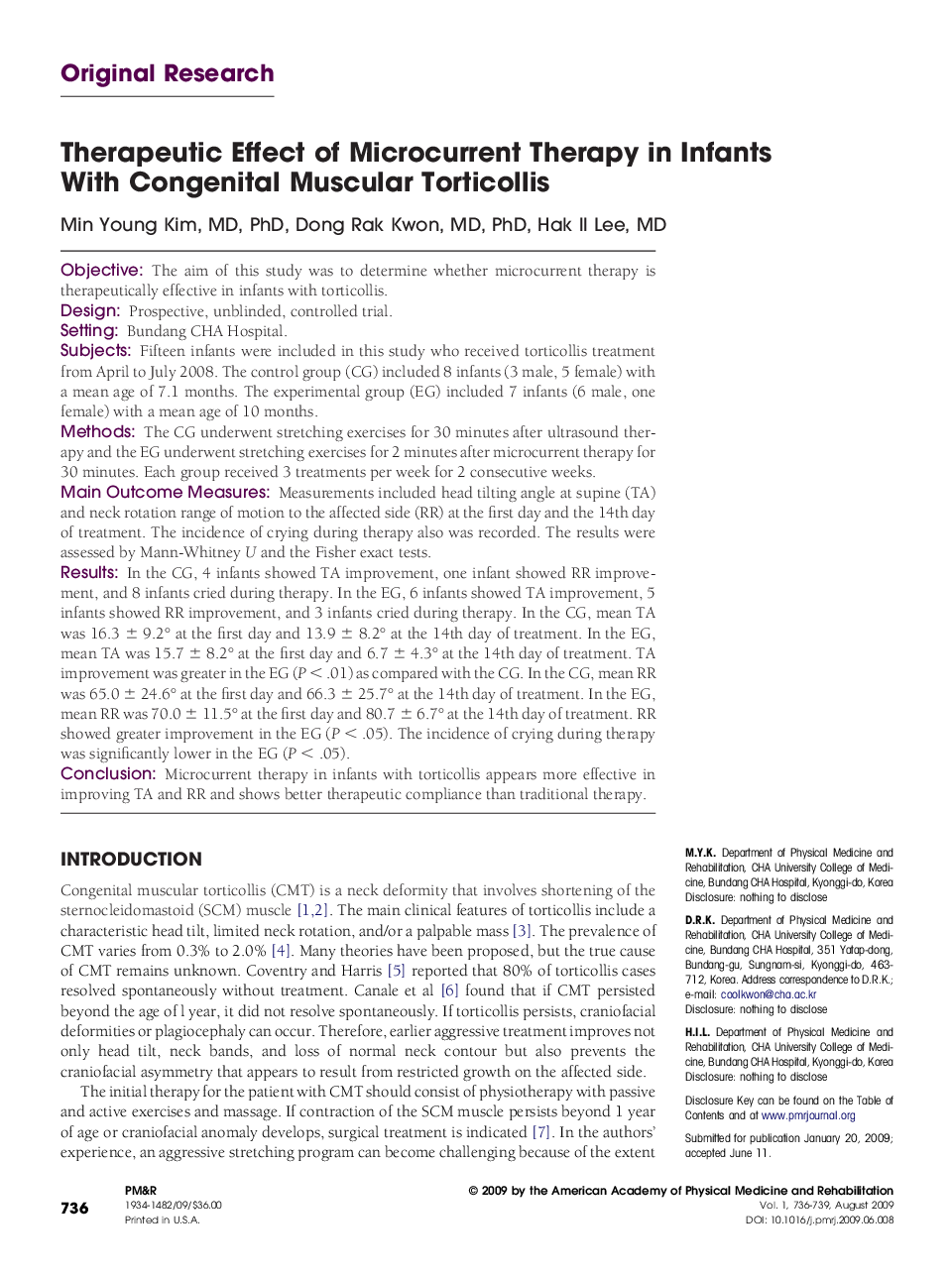| Article ID | Journal | Published Year | Pages | File Type |
|---|---|---|---|---|
| 2706682 | PM&R | 2009 | 4 Pages |
ObjectiveThe aim of this study was to determine whether microcurrent therapy is therapeutically effective in infants with torticollis.DesignProspective, unblinded, controlled trial.SettingBundang CHA Hospital.SubjectsFifteen infants were included in this study who received torticollis treatment from April to July 2008. The control group (CG) included 8 infants (3 male, 5 female) with a mean age of 7.1 months. The experimental group (EG) included 7 infants (6 male, one female) with a mean age of 10 months.MethodsThe CG underwent stretching exercises for 30 minutes after ultrasound therapy and the EG underwent stretching exercises for 2 minutes after microcurrent therapy for 30 minutes. Each group received 3 treatments per week for 2 consecutive weeks.Main Outcome MeasuresMeasurements included head tilting angle at supine (TA) and neck rotation range of motion to the affected side (RR) at the first day and the 14th day of treatment. The incidence of crying during therapy also was recorded. The results were assessed by Mann-Whitney U and the Fisher exact tests.ResultsIn the CG, 4 infants showed TA improvement, one infant showed RR improvement, and 8 infants cried during therapy. In the EG, 6 infants showed TA improvement, 5 infants showed RR improvement, and 3 infants cried during therapy. In the CG, mean TA was 16.3 ± 9.2° at the first day and 13.9 ± 8.2° at the 14th day of treatment. In the EG, mean TA was 15.7 ± 8.2° at the first day and 6.7 ± 4.3° at the 14th day of treatment. TA improvement was greater in the EG (P < .01) as compared with the CG. In the CG, mean RR was 65.0 ± 24.6° at the first day and 66.3 ± 25.7° at the 14th day of treatment. In the EG, mean RR was 70.0 ± 11.5° at the first day and 80.7 ± 6.7° at the 14th day of treatment. RR showed greater improvement in the EG (P < .05). The incidence of crying during therapy was significantly lower in the EG (P < .05).ConclusionMicrocurrent therapy in infants with torticollis appears more effective in improving TA and RR and shows better therapeutic compliance than traditional therapy.
